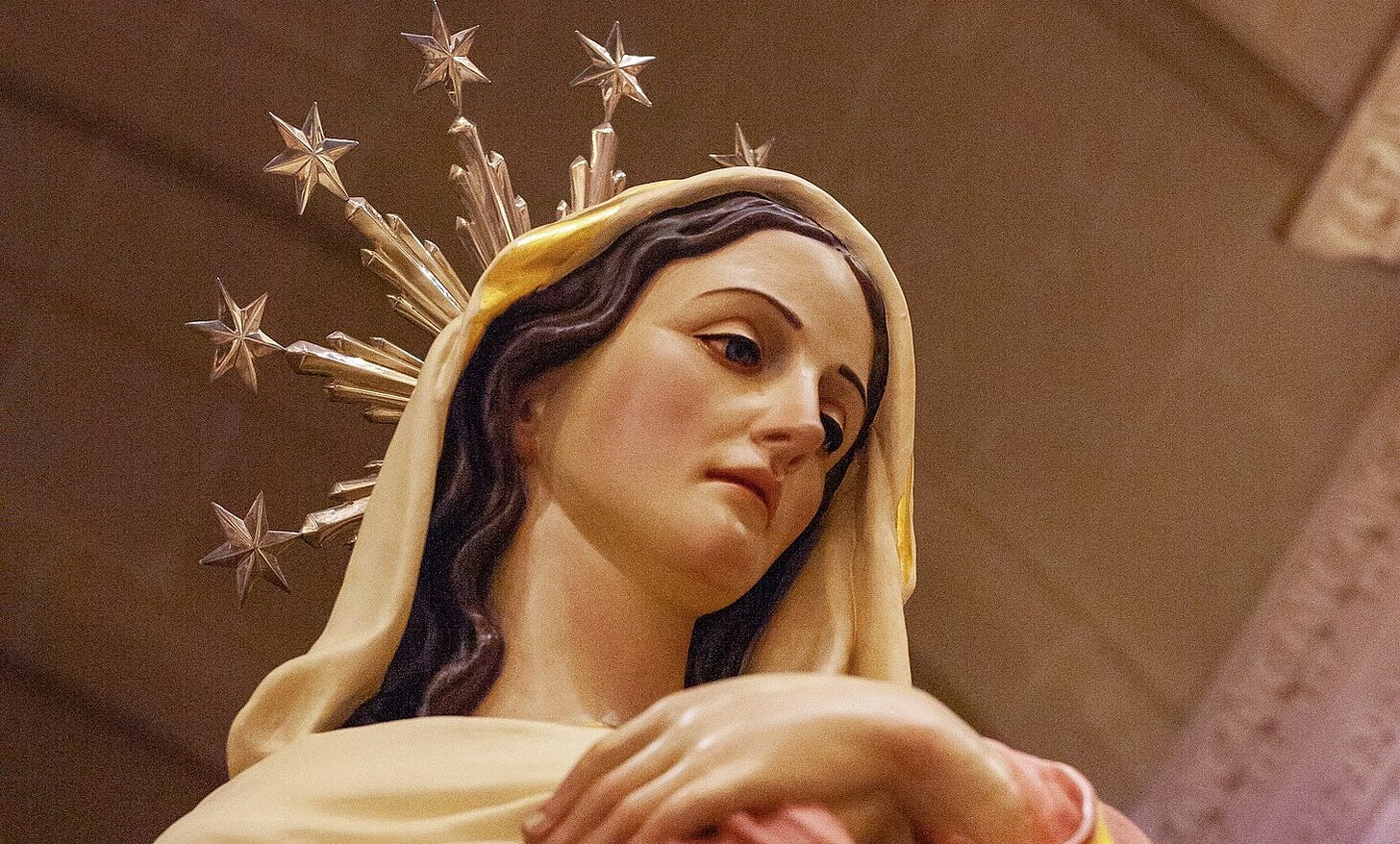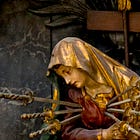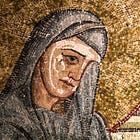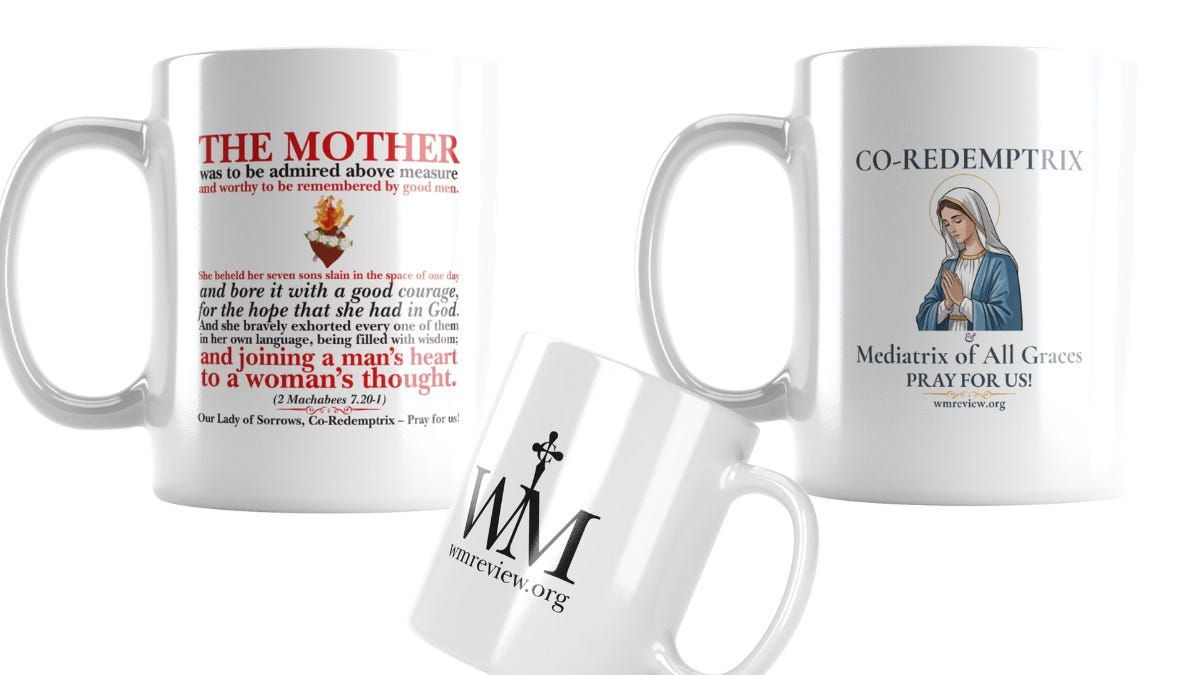What 'Co-Redemptrix' actually means
When Our Lady stood at the foot of the Cross, she was perfectly submitted to God's will, such that she herself willed and consented to the Sacrifice of her Son, just as he himself did.

When Our Lady stood at the foot of the Cross, she was perfectly submitted to God’s will, such that she herself willed and consented to the Sacrifice of her Son, just as he himself did.
‘Unhelpful’
4 November 2025: The Vatican’s Víctor Manuel Cardinal Fernández (Prefect for the formerly “Dicastery of the Doctrine of the Faith”), has released a note on Marian piety. This note states that the title “Co-Redemptrix” is “always inappropriate” – as well as “unhelpful”, because it “requires many, repeated explanations to prevent it from straying from a correct meaning.”
We note that a reader of The WM Review has pointed out that Fernández’s own document Fiducia Supplicans certainly falls foul of this stricture – as do many other documents and ideas that have emerged over the last sixty years.
But Fernández is right to suggest that the title “Co-Redemptrix” is not well understood. Some English-speakers seem to understand “co-” to indicate equality, rather than subordination and difference in kind – which is certainly a misunderstanding of what Popes, Doctors, saints, theologians and holy writers have understood by this term.
However, we maintain that when traditional and time-worn terms are not well understood, the solution is education, rather than suppression.
To this end, we are re-presenting our earlier two-part series on the compassion of Our Lady, which is intrinsically linked to the idea of her as “Co-Redemptrix.” In these articles, Fr Coleridge explains that Our Lady’s compassion does not mean a simple sympathy for her Son’s suffering.
It means, rather, a consent to his sacrifice, and a subordinate, dependent act of offering this sacrifice with him – similar to the role that the Maccabean mother played in the execution of her seven sons.
Here are the two parts:
St Louis de Montfort’s qualification
While Our Lady’s role is so exalted and sublime that awe is the appropriate response, it may also be helpful for non-Catholics to read the following from St Louis de Montfort.
This is a saint with one of the highest conceptions of the Mother of God. Nonetheless, in describing the power of Our Lady’s intercession, he explains:
“Mary, infinitely inferior to her Son, who is God, does not command him in the same way as an earthly mother would command her child who is beneath her. Since she is completely transformed in God by that grace and glory which transforms all the saints in him, she does not ask or wish or do anything which is contrary to the eternal and changeless will of God.”
(True Devotion, I. 27)
In addition, we refer readers to the following articles on the same topic from The WM Review:
We hope that these articles help shed light on what Catholics believe, and why these terms have been used, and ideas expressed, by so many high authorities over the centuries.
Finally, if you feel strongly about this issue, why not get the mugs?
Here’s why you should subscribe to The Father Coleridge Reader and share with others:
Fr Coleridge provides solid explanations of the entirety of the Gospel
His work is full of doctrine and piety, and is highly credible
He gives a clear trajectory of the life of Christ, its drama and all its stages—increasing our appreciation and admiration for the God-Man.
If more Catholics knew about works like Coleridge’s, then other works based on sentimentality and dubious private revelations would be much less attractive.
But sourcing and curating the texts, cleaning up scans, and editing them for online reading is a labour of love, and takes a lot of time.
Will you lend us a hand and hit subscribe?
Follow our projects on Twitter, YouTube and Telegram:
Twitter (The WM Review)










